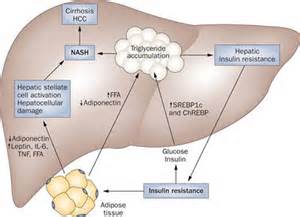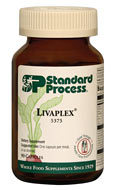Non-Alcoholic Fatty Liver Disease

|
a sick, its prison.” Francis Bacon |
Non-alcoholic fatty liver disease is estimated to occur in 10-40% of adults in the United States. Non-alcoholic fatty liver disease (NAFLD) is emerging as the most common chronic liver condition in the Western world and it is the buildup of extra fat high levels of cholesterol and triglycerides in in liver cells that is not caused by alcohol use. It is normal for the liver to contain some fat. However, if more than 5% to 10% of the liver’s total weight is fat, then it is called a fatty liver. The amount of fatty acid in the liver depends on the balance between the processes of delivery and removal. In some patients, fatty liver may be accompanied by hepatic inflammation and liver cell death. Potential pathophysiologic mechanisms for fatty liver include decreased mitochondrial fatty acid beta-oxidation and enhanced delivery of fatty acids to the liver. Many cases are considered benign as they do not cause any noticeable physical symptoms or lead to future health problems. It is possible, however, for fat buildup to eventually cause chronic inflammation, tissue scarring, and possibly liver failure.
- In what type of people NAFLD tends to develop
- Symptoms of NAFLD
- What are complications











